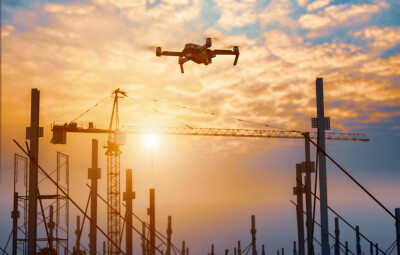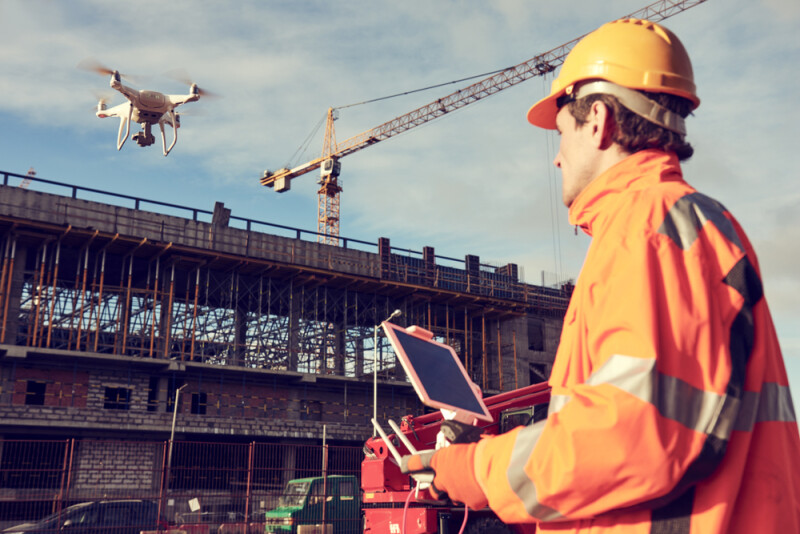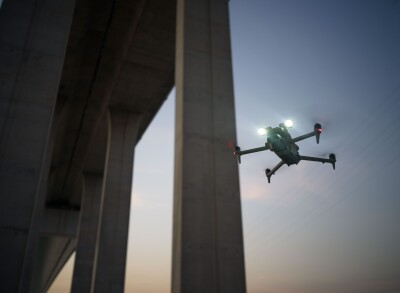Last month, the United States House of Representatives approved the National Defense Authorization Act (NDAA), its version of the annual defense policy bill. It’s a complex measure with a lot of individual policies and amendments included, and it’s unlikely to pass through a Democrat-controlled Senate in its current form. For the most part, the NDAA revolves around defense programs and initiatives, but this particular version of the bill includes one amendment that is being watched extremely closely by a number of surveyors and members of the construction industry.
The amendment in question is the Countering CCP Drones Act, introduced by Representative Elise Stefanik (R-NY), which would add Chinese drone manufacturer DJI to an FCC “covered list” of products that are prohibited from running on US communications networks. While not technically an outright ban on DJI drones, this bill would “effectively render the drones unusable in the US,” according to Aaron Karp in a column written for our sister site, Commercial UAV News.
In terms of the actual contents of the act itself, you can read the full proposed bill in the link above, there have been impassioned arguments for both sides. You can read a fuller breakdown of the arguments on both the for and against side here, again on Commercial UAV news. For a quick summary, proponents generally allege that DJI drones are using their technology to collect data on critical infrastructure in the United States, which is then being shared with the Chinese Communist Party. Others point to how many professionals rely on these drones for their day-to-day work, including those in the public safety sector, and an immediate ban would prove extremely harmful to these industries.
The purpose of this column is not to take one side or the other on this issue – there are plenty of places around the web to find more informed cases for either position than what I would be able to provide – but rather to focus on one particular industry that will feel the impact of this act passing should that come to fruition: Construction.

Generally speaking, from what I’ve seen the coverage around this potential DJI defacto ban has focused on two spaces – public safety, and hobbyists. Both are large sectors with a large number of DJI users, so it makes sense that they are being highlighted a lot, but many industries are heavily invested in DJI drones. According to one 2021 report, for example, DJI boasted about 76 percent of the global market share of consumer and commercial drones.
Thinking specifically of construction, it’s difficult to find breakdowns of how much market share individual companies boast within the sector, but it’s fair to believe DJI is a significant player. Broadly speaking, we know that usage of drones within the construction industry is increasing, with teams using UAVs for reality capture, site monitoring, change detection, and safety compliance. According to one report, the construction drone market is estimated to increase by $25.8 billion at a 17.2 percent compound annual growth rate (CAGR) by 2030.
In other words, we should be expecting significantly more construction professionals to start utilizing drones over the next half-decade, which means people are going to need to monitor the situation with a potential DJI ban. Among the most affordable options for commercial drone operations, DJI is a popular brand across industry, and anecdotally I’ve spoken to a number of construction professionals who use their equipment on construction sites. This list of top drones for construction, published on The Drone Girl blog, includes six different models, half of which are under the DJI umbrella.
The good news is that there are indeed other options if this ban does go through. Companies like Skydio, WISPR, and Wingtra, among many others provide quality options for construction firms who want to maintain the value they derive from utilizing UAVs on their sites in the instance of a de facto DJI ban.
To be clear, any sort of ban is not likely to come through imminently. As noted above, the Senate is not likely to pass the overall NDAA bill in its current form, so amendments will be added and removed over the course of this process. Even in the event this act does pass through both chambers of the house, it’s likely there will be some challenges to the courts about the legality of the ban, further delaying any hard implementation.
The point, though, is that those companies need to start thinking about this now to be prepared should a switch be needed to ensure seamless operations. And for those companies who are just thinking about entering the market, they don’t need to avoid DJI given the advantages they provide, but staying apprised of the progress made on this front is absolutely a necessity.






